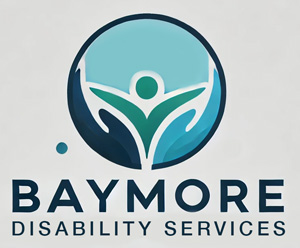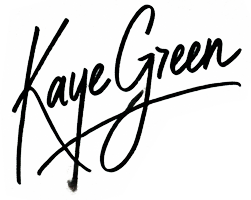Australian Human Rights Commission Workers in health and community services have numerous legal responsibilities. Legal and ethical requirements for workers in health and community services protect workers as well as the individuals who receive those services.
Some legislation is relevant to all workers and settings, whereas other legislation is only relevant in specific situations. For example, what is legally required in one state may not be legally required in another.

Image by Armmy Picca, Shutterstock, Shutterstock licence
The legal responsibilities of workers are embedded in organisational policies, guidelines and practice manuals. These policies, guidelines and manuals guide workers’ daily activities.
Supervisors must ensure that workers understand organisational policies and can access relevant guidelines and practice manuals.
Privacy, confidentiality and disclosure
When working in health and community services, you’ll often need to share information with other professionals and agencies in various circumstances.
For example, a client may require support outside the scope of a service, or a client may be transitioning to a different agency.
You must know the relevant ethical, privacy, confidentiality and legal considerations. How you handle and pass on a person’s information will directly impact that person’s access to and quality of care.
When you are providing support to someone, you will often need to work with a range of other professionals and agencies. This may require you to share information about a client with another agency, for example:
- contact details (address, phone number)
- incident reports
- individual plans and goals
- information about a client’s specific needs.
 Select to learn more
Select to learn more
Before sharing any information about a person with another agency, you must know the privacy, confidentiality and disclosure legislation.
Select each bar to expand and unpack the definitions.
Australia’s Privacy Act 1988 (Commonwealth) outlines the legal requirements of agencies and organisations for handling personal information, including how that information is:
- collected
- used
- disclosed
- stored.
 Read to learn more
Read to learn more
Read Your privacy rights to learn more about how
organisations and agencies must handle your personal information under the Privacy Act.
Most Australian states and territories also have their own privacy legislation. You should be familiar with the main points in the legislation governing your state or territory.
Now read Rights and responsibilities to learn how the Privacy Act impacts organisations and individuals.
Any organisation subject to Commonwealth privacy law must have a privacy policy that is clearly written and up to date. It must be available to staff and may be included in organisational policies or displayed in a public area, for example, as a poster in an office.
Key impacts on your work include:
- Disclosing personal information to unauthorised people would be breaching the Privacy Act.
- Confidentiality provisions can be defined in your employment contract and in the organisation’s policies and procedures. Confidentiality helps you and your organisation build trust with staff and clients.
- Laws regarding privacy and confidentiality are designed to protect people’s dignity, rights and wellbeing.
Collecting and using personal information
You will often have access to privileged and sensitive information about the people you work with. You can protect how you gather and use client and organisational information as you work under the Privacy Act.
Under the Act, a range of different types of personal information can be collected about a person.
 Select to learn more
Select to learn more
Select each bar to expand and reveal further information about the Privacy Act.
The Act provides a higher level of protection for sensitive and health information. For example, an organisation must not collect sensitive information from someone unless they have consented (some exceptions apply).
 Read to learn more
Read to learn more
Read the Guide to Health Privacy Introduction and key concepts
to understand your obligations under the Privacy Act 1988.
| Follow these tips to protect personal and sensitive information. | |
|---|---|
|
Do not discuss details about a client with a colleague who is not involved in that client’s support. |
Always follow your organisation’s procedures for obtaining consent to collect and share personal and sensitive information. |
|
Do not share personal details about a co-worker without their consent. |
Tell clients why you are collecting information about them. |
|
Store information about clients securely, such as in locked filing cabinets and/or password-protected electronic files. |
|
Storing information
Your organisation must take reasonable steps to protect the personal and sensitive information it stores. Organisations must ensure that the personal and sensitive information they are storing is:
- not misused
- interfered with
- lost
- accessed by an unauthorised person
- modified
- disclosed.
| Follow these practices to secure both electronic and physical information. | |
|---|---|
|
Using passwords protects information stored electronically, so only authorised staff can access it. |
Keep a hard copy of your personal information in a locked file or cabinet. |
|
Make sure employees log off when they walk away from their computer. |
Place computer screens out of the view of people who are not authorised to view them, especially visitors to an organisation. |
Consent
Consent means you give permission or agree to something. For example, when a client gives informed consent to something, it means that person:
- has been provided with adequate information
- understands that information
- understands the consequences of their decision
- can make a decision freely without pressure from another person.
In the health and community services context, informed consent is associated with decisions made regarding the provision of care. When a person provides informed consent about the provision of care, they understand the risks and benefits associated with that decision.
Most community organisations use a consent form when seeking consent from a client to share information with another agency. The format of consent forms will vary between agencies.
Here is an example of a consent form used by a disability service:

Baymore Disability Services |
|
Consent to Disclose InformationI, Jacqueline Foster (full name of client or representative) of 27 Vasey Court, Wynvale SA, 5098 (address) consent to Baymore Disability Services disclosing information about me to Outer South Respite Service (name of agency) for the purpose of referral/application for respite funding. |
|
Specific Details of Information (if required):
|
|
Limitations (if required):None / [Specify limitations] |
|
|
Client: Name: Jacqueline Foster Signature: Date: 20 September 2024 |
Witness: Name: Kaye Green Signature: Date: 20 September 2024 |
|
Baymore Disability Services – Providing quality care and support for individuals with disabilities. Contact Information: Phone: (08) 8196 1890 | Email: info@baymore.com.au | Website: baymore.com.au |
|
Some organisations also have a standard referral document that their staff use when making a referral to another service.
Information you might need to incorporate in a referral document includes information about services the client is currently receiving or involved with.
Exchange information clearly
Organisations have processes and procedures for exchanging information. You need to find out what these processes and procedures are in your workplace.
In health settings, workers apply the ISOBAR framework when handing over clinical information. ISOBAR is a multi-step process that requires background information about the worker and the client/individual and forward planning regarding care provision.
Although the ISOBAR tool has been designed for health services, the principles can be applied in any setting where agencies share information about individual patients or clients.
 Read to learn more
Read to learn more
Read the Implementation toolkit for clinical handover improvement if you must use the tool (based on ISOBAR) in a clinical setting.
 Select to learn more
Select to learn more
Select the items on the image to reveal more information.
 Case study
Case study
Read the following case study for an example of how you can exchange information clearly promptly according to confidentiality procedures.
Po-shun works at a community health service and regularly provides written and verbal referrals to specialists in the team.
This week Po-shun rang the podiatrist (Jenna) to arrange for Mrs Elliot to access the podiatry service. Po-shun handed Mrs Elliot’s information over in the following exchange:
‘Hello Jenna, this is Po-shun. I’m calling about an individual who already accesses our service. The person’s name is Mrs Cynthia Elliot.
Mrs Elliot is a diabetic and I noticed this morning that she is developing ulcers on her feet that will require a podiatry review.
I will also send through her current medical history and medication list.
I would like to arrange an appointment for her to see you as soon as possible.’
Ethical behaviour and responsibilities
Ethics are moral principles that govern a person's behaviour.
Ethical decision-making is the process used to make decisions that align with a code of ethics. It includes the personal, organisational and legal standards of behaviour expected of workers.
A code of ethics could be outlined, or more often implied, in legislation, organisational policies, professional standards or a combination of resources.
Even when agreed upon principles and guidelines exist, determining what constitutes ethical conduct is not always easy. For example, if your colleague tells your boss that he didn’t miss a deadline – even though you know that he did – it might be ethical to tell your boss that truth. On the other hand, if the colleague is a friend of yours going through a difficult time and cannot afford to lose their job, telling your boss that he lied might feel unethical to you.
How you choose to act in a particular situation will be influenced by various factors, including relationships, loyalties and emotions. Be informed so you understand your legal and professional obligations and apply them above all else.
Resources that outline employees’ ethical responsibilities can include:
- legislation and regulations, for example, anti-discrimination laws
- codes of ethics
- accreditation or service standards (national/state)
- organisational policies and procedures
- organisational codes of conduct, guidelines and practice manuals
- job specification/position descriptions (role boundaries, levels of responsibility).
Mandatory reporting
Mandatory reporting is the legal requirement to report suspected cases of abuse and neglect. It mainly relates to children but can also relate to adults if the person involved is living in a residential service or is a vulnerable person.
Each state and territory has slightly different mandatory reporting requirements for child abuse and neglect. These differences relate to:
- who is required to report suspected child abuse and neglect
- what types of abuse and neglect need to be reported
- when abuse and neglect need to be reported.
To fully understand your mandatory reporting requirements and when you should make a report:
- speak with your supervisor
- review your workplace policies and processes for reporting abuse and neglect
- use the links below to access the information for each state.
 Research to learn more
Research to learn more
Select your state or territory from the following list, research the information, and complete the following activity.
|
Resource Sheet Read the Resource Sheet at Mandatory
reporting of child abuse and neglect produced and annually updated by the Australian
Institute of Family Studies. |
|
ACT |
|
NSW |
|
NT |
|
Qld. |
|
SA |
|
Tas. |
|
Vic. |
|
WA |
 Record your thoughts
Record your thoughts
Document your thoughts to each of the questions presented. When you have finished, select Create Document to export your content and keep for later.
Indications of risk
As part of your legal and ethical responsibilities, you must be aware of the signs that indicate a child or vulnerable adult is being abused or neglected or is at risk of being abused or neglected.
 Select to learn more
Select to learn more
Select each bar to expand and reveal further information about each type of child abuse and their indicators.
Remember, this is not a complete list of indicators of abuse. Also, these are indicators only: not every child who has one of these indicators is being abused or neglected, and not every child who is being abused or neglected will have one of these signs.
 Read to learn more
Read to learn more
Read How to recognise child
abuse for more information about indicators of child abuse and neglect.
Adult disclosures of abuse
Some older people and adults with disability are at risk of abuse because of poor physical health, social isolation and care dependency.
You can offer emotional support when working with an adult who discloses that they are being abused by:
- Listen to the person and give them time to talk about their experience.
- Acknowledge and validate their experience.
- Try to be calm and non-judgemental.
When working with vulnerable adults, be aware of your legal and ethical responsibilities when an adult discloses that they are being abused or if you suspect abuse is occurring. In some circumstances, you may be legally required to report the abuse. In other circumstances, the most ethical and appropriate response would be to talk with the person about their options.
Different states and territories have different approaches and requirements for reporting abuse of vulnerable adults.
Work role boundaries
When you maintain professional boundaries, you’re adhering to the specifications of your job role and organisational policies and procedures. You maintain adequate personal boundaries in your professional relationships with people you support.
As a community service worker, you should not attempt to carry out work that:
- is not specified in your job description
- cannot be performed safely due to a lack of training or practical experience
- is unethical, illegal or outside the policies and procedures of the organisation.
Your workplace will have documents that outline your role, rights and responsibilities such as:
- position descriptions
- workplace policies and procedures (for example, infection control)
- practice manuals and guides
- codes of ethics
- service standards (if relevant to a particular field)
- legislation and regulations (for example, workplace health and safety).
Make sure you read these documents and clarify any areas you are uncertain about with your supervisor. Clarification involves seeking additional information on an issue, explaining how you understand the issue then checking that your understanding is correct.

Image by Smolaw, Shutterstock, Shutterstock licence
 Research to learn more
Research to learn more
Research your position description and your workplace policies and procedures to understand your role, rights and responsibilities.
Record your findings in your digital device or notebook.
 Case study
Case study
Here is an example where a worker complies with legal and ethical responsibilities and discusses difficulties with supervisor.
Jarrod is a social worker. He has been providing support to Chloe, a 14-year-old high school student, and her
family for a few months. Chloe is being bullied at school and is socially isolated. She rarely leaves her
house except to go to school and see Jarrod.
After a session one afternoon, Chloe tells Jarrod that she has no money to get home and asks to lend $10 from him. Jarrod tells Chloe it would be inappropriate for him to lend her money but asks if she would like to use the phone at reception to contact her parents and ask them to collect her.
Duty of care
Working in the health, community and social services sectors, you have a legal and moral obligation to ensure the safety of others, especially clients. This responsibility is referred to as ‘duty of care.’ Duty of care can apply to children, aged care and disability support. Staff must take reasonable care to avoid someone being injured. You need to ensure your clients are safe and do not place them in danger.
Although we don’t always know whether our actions will cause someone to be injured, a duty of care applies to situations where we reasonably expect an action to affect another person.
For example, giving a young child a sharp knife to cut up a piece of fruit is an act that may represent a breach of duty of care. Not providing adequate supervision for children during an excursion to the beach may represent a breach of duty of care; it is an omission.
Duty of care only applies to those areas that are relevant to the circumstances of the care. For example, a doctor has a duty of care regarding the medical treatment she provides but does not have a duty of care regarding a patient’s finances.
However, in some circumstances, professionals have a duty of care to children, even if they are not their clients. For example, a registered psychologist working with an adult client who believes, on reasonable grounds, that the child of their client is in need of protection has a duty of care towards that child according to mandatory reporting laws in Victoria.
The laws around duty of care vary depending upon your work role, the type of service you provide, and the state/territory where you work.
Dignity of risk
Dignity of risk is a person's right to dignity and choice, upheld in legislation and service standards, to ensure that duty of support or safety is not used as a reason to limit a person's freedom of personal choice.
Dignity of risk was first devised in relation to the care of people with intellectual disabilities in the 1970s. At that time, people with intellectual or developmental disabilities were often viewed as incapable of living independently or making decisions for themselves, which often deprived them of the common life experiences that other people take for granted.
Dignity of risk acknowledges that life comes with risk and that we must support people to experience success and failure. We make mistakes and learn by taking risks and trying new things.
With many activities, it is not possible to eliminate risk. The legal requirement of dignity of risk means that workers must find a balance between duty of care and the inherent right of individuals to decide what level of risk they are comfortable with.
The key issue when considering the legal and ethical implications associated with dignity of risk is to determining what is an acceptable level of risk for the benefit that the activity offers. These questions should be discussed with the person and their families or carers.
- What are the potential risks?
- What are the potential benefits?
- How can the risks be reduced without reducing the benefits?
 Watch the video
Watch the video
Watch ‘What is duty of care? Duty of care vs dignity of risk’.
This video focuses on mental health workers, but the information is relevant to all workers where support is offered to clients.
As you watch, consider the scenarios presented and the choices workers need to make to fulfil duty of care requirements while maintaining a client’s dignity of risk.
Discrimination
Discrimination occurs when an individual is treated less favourably than others because they belong to or identify with a particular group.
A person can also be discriminated against because they are perceived to belong to or identify with a particular group, even if that perception is incorrect. For example, a person might be discriminated against because their boss believes they are autistic, even if they are not autistic.
In Australia, it is unlawful to discriminate against people because of their age, gender, ethnicity, disability or impairment, marital status, sexual preference, political or religious beliefs.
 Research to learn more
Research to learn more
The following table includes some of the Commonwealth Acts that enshrine laws against various forms of discrimination. Additional legislation exists in each state and territory. Search for each act online and then complete the activity below.
| Forms of discrimination | Acts |
|---|---|
|
Discrimination based on age |
Age Discrimination Act 2004 (Cth) |
|
Discrimination based on disability |
Disability Discrimination Act 1992 (Cth) |
|
Discrimination based on race, national or ethnic origin or immigrant status |
Racial Discrimination Act 1975 (Cth) |
|
Discrimination based on sex, pregnancy, marital or relationship status, family responsibilities, or breastfeeding status |
Sexual Discrimination Act 1984 (Cth) Equal Opportunity for Women in the Workplace Act 1999 (Cth) |
 Check your understanding
Check your understanding
Check your understanding of Commonwealth Acts by matching each act to its description. Fill in the blanks by dragging the words into the correct place, then select ‘Check’ to see if you are correct.
 Read to learn more
Read to learn more
Read Our work from The Australian Human Rights
Commission (AHRC) for additional information on equity and discrimination in Australia.
 Case study
Case study
In the following case study, observe how Madina complies with legal and ethical responsibilities and discusses difficulties with her supervisor.Madina is a youth worker who works with young people in transitional housing. She goes grocery shopping for
the house with 17-year-old Sharnie. Sharnie grabs a few items for herself that don’t fall within the
household budget. At the check-out, Madina pays for the household shopping, then looks at the items Sharnie
holds and says, ‘Don’t forget to pay for those.’ Sharnie shakes her head and walks toward the doors, clearly
not intending to pay for her items.Madina realises that Sharnie has the right to make choices regardless of her own values or opinions. Madina is also aware that if Sharnie were alone, she could choose to shoplift. Madina doesn’t want to infringe on Sharnie’s independence. However, since she is aware of what Sharnie intends to do, by not intervening Madina is enabling an illegal act. Madina decides that her obligation to uphold the law and her legal responsibilities to Sharnie as a person under 18 means that she needs to intervene.
Madina calmly says, ‘You need to pay for those items.’ When Sharnie shakes her head again, Madina looks at her and repeats the statement. Sharnie swears at Madina, throws the items on the check-out and storms out of the shop. They return to the group house where Madina writes clear case notes about what happened. Sharnie is angry for the rest of the evening. Madina discusses the situation with her supervisor Jye who confirms that she made the right decision.
Language and communication
People working in the health and community services sectors often need to tailor how they communicate with clients to ensure their message is understood. When tailoring communication, it is important to account for language considerations.
For example, a support worker might need to avoid using industry specific words or acronyms when communicating with a client. Or a worker may need to speak more slowly when communicating with someone with a cognitive impairment.
There may be situations where you need to use an interpreter to help you communicate verbally with someone who does not speak English or has limited English proficiency. An interpreter can translate speech from one language to another to assist understanding. Relying on a person’s family member or friend to interpret for you can be problematic. For example, a person’s right to privacy could be breached if a family member is involved in interpreting for them.
Another alternative when working with documents is to engage the services of a translator who can help convert written information from one language to another.
Professional interpreters and translators are bound by a code of ethics that ensures the privacy of the individuals they work with.
 Check your understanding
Check your understanding
Fill in the blanks by dragging the words into the correct place, then select ‘Check’ to see if you are correct.
Background Colour
Font Face
Font Kerning
Font Size
Image Visibility
Letter Spacing
Line Height
Link Highlight
Text Colour

